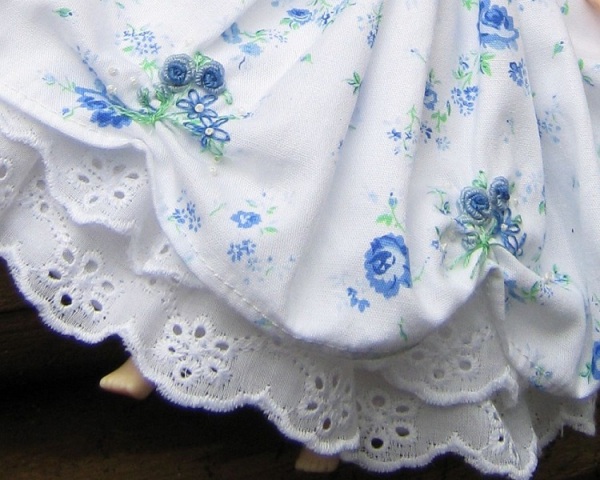Chikankari, or Chikan work, is one of the most popular forms of embroidery in India. It is essentially hand embroidery, with patterns of different designs that are stitched using untwisted white cotton or silk (or rayon) threads on the surface of the fabric. Since its inception, the embroidery has been the hot favorite of all those fond of style and elegance. The main and famous center of Chikan work is Lucknow, where the art attained glory and perfection. The various types of Chikan work practiced today are Taipchi, Bakhia, Phunda, Murri, Jaali, Hathkati, Pechni, Ghas Patti, Chaana Patti, etc. Chikankari is a very delicate and time consuming craft, which requires about 10 - 15 days in making an outfit. The delicacy and intricacy of the design and patterns makes it is expensive as compared to machine embroidery.
Image: susan402@flickr
History
The history of Chikan work is not definite and different people have different assumptions and beliefs regarding the same. One of the strongest and most assertive claims regarding Chikankari is that Noorjahan, the beautiful queen of Emperor Jahangir, introduced this form of embroidery in India. It is said that she was very skilled at embroidery patterns and was quite fascinated from Turkish embroidery. According to Megasthenes, the Greek traveler, the art of Chikankari started in East Bengal in 3rd century.
He also mentions Chikan, which refers to floral prints on fine muslin clothes. On the other hand, the craftsmen are of the view that its origin dates back to the period of the Prophet. According to the folklore, while Prophet was passing through a village, he felt thirsty. He requested a villager for water, who readily offered him some. Being pleased with the courtesy and humility of the villager, he granted him the art of Chikankari, to ensure that he had a skill to make a living and never ever went hungry in his life.
Patterns
There are a number of patterns, which are practiced on the cloth with the help of Chikan work, making the attire an inimitable piece of art. There are basically three types of design which are commonly seen:
-
Flat Stitch (It involves subtle stitches that remain close to the fabric)
-
Embossed Stitch (It gives a grainy look)
-
Jali Work (Created by thread tension, to give a delicate net effect)
To prepare attire, the basic processes involved are cutting, stitching, printing, embroidery, washing, and finishing. The first step of cutting is carried out in bulk, on 20-50 garments at a time. This is done to minimize the wastage of materials. This is followed by stitching, which may be ‘civil’, done exclusively for expensive export orders or ‘commercial’, done for comparatively cheaper items. The next step is printing, carried out with the help of wooden blocks dipped in dyes like neel and safeda. These are washed out after the embroidery is done.
After this, the fabric is embroidered by skilled craftsmen. Chikan work takes an artisan at least 4 to 5 days to embroider a fashionable ensemble. The workers also have to be very particular about completing their work on their own, as the handiwork of each artisan differs, failing which the uniformity of the pattern will not be attained. For the intricate design work, only artisans with artistic and nimble handiwork are appointed. The last process is washing and finishing, which includes bleaching, acid treatment, stiffening, and ironing.




